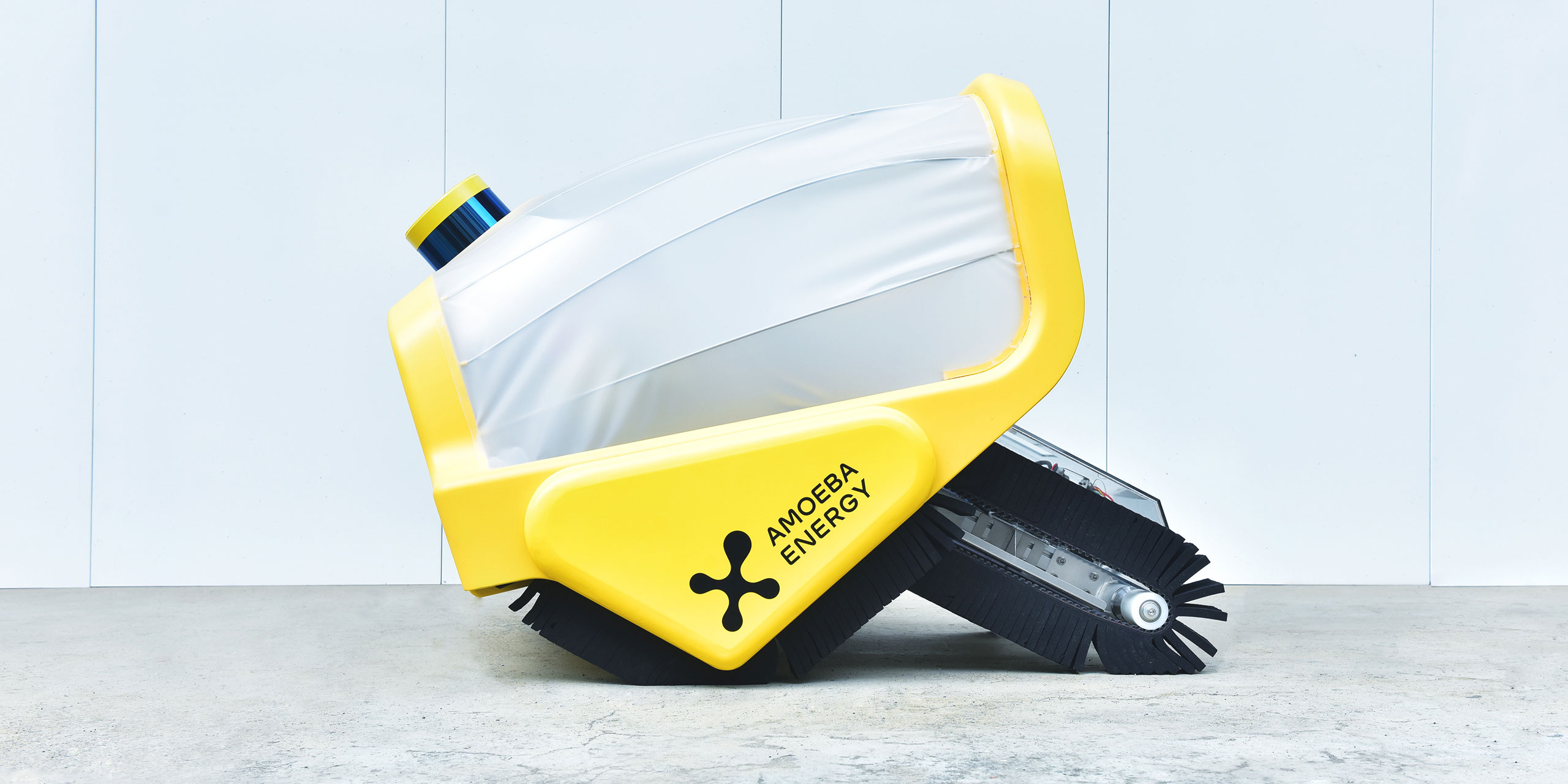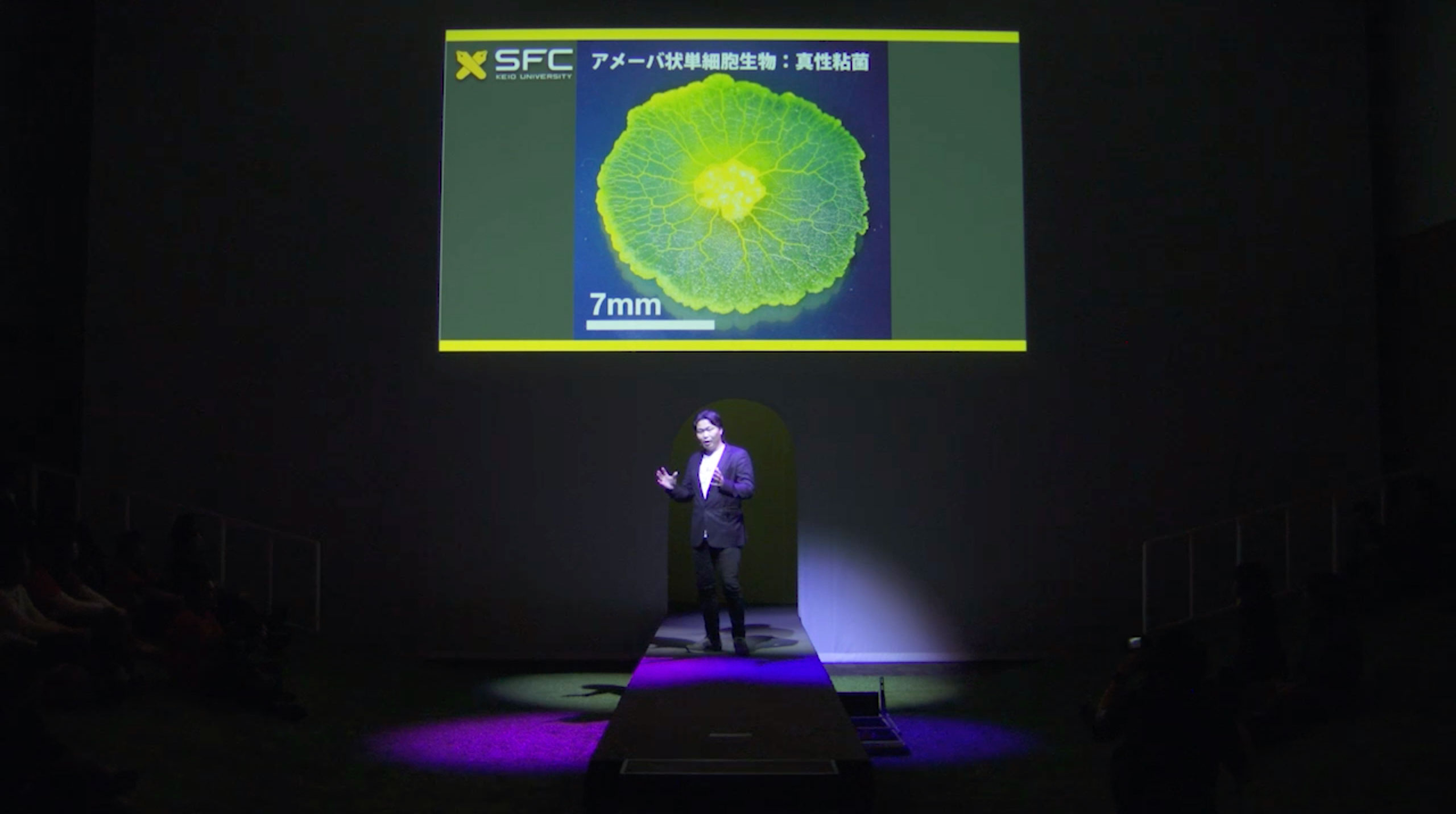PRODUCT
CONCEPT MODEL



CONCEPT MODEL
Amoeba GO-1(prototype)

01
Climbs most stairs which occur in daily life:
35 degrees of elevation, each step height up to 18 cm

02
Carries heavy loads easily:
- Payload up to 6 kg
- Can climb a 5-story or higher building

03
Gives a sense of familiarity and safety:
- Flexible body materials with a soft touch
- Shock absorbing body, safe for humans and furniture
MECHANISM
MECHANISM
Sensibility, Intelligence, and
Motility with Soft Bodied Robots
"Stairs" for Humans can be
"Unexplored Frontiers" for Robots
Our houses are full of stairs with variable dimensions and courses.
However it is impossible for robots to know these parameters until they have actually climbed them.
In order to climb new stair environments in one-shot, robots had to have a very high costed feedback system consisting of :
- Sensors that collect enormous amounts of data from the environment
- Processors that process the data in real time
- Actuators that accomplish motion with extremely high precision
The "Softness" of Amoebas,
now integrated in Robotics
An Amoeba can adapt to versatile environments through its soft body.
Inspired by the Amoeba, we adapted elastic material to a crawler.
The deformation of this soft crawler acts as an integrated system of sensors, processors, and actuators:
- Sensing ground shape through touching
- Optimizing its shape to fit to the ground for a firm grip
- Transmitting sufficient driving force to the ground
In this way, soft crawlers can achieve the same functionality as feedback control
with much lower computational and financial costs.
This is the way how the Amoeba survives in nature, and we have adapted this idea to create our soft crawlers.

WHY AMOEBA?

WHY AMOEBA?
MOTION = SOLUTION
AMOEBA ENERGY's CEO, Dr. Masashi Aono, also an associate professor at Keio University,
has been studying the sophisticated information processing capacities of
a single-celled amoeboid organism (the true slime mold Physarum).
He has shown that this Amoeba is able to find solutions to complex optimization problems,
through changing its shape in response to environmental stimuli.
The "Traveling salesman problem" is one such example, known to be increasingly important
when promoting the efficiency of various real-world systems.
The aim is to create new types of problem solvers (non-Neumann computers),
implementing the algorithms inspired by the AMOEBA's adaptive shape-changing dynamics.
Our team of researchers from institutes including Keio University, Hokkaido University, Tokyo Institute of Technology,
and Yokohama National University, is developing a compact and low-power electronic circuit called the "Amoeba-inspired Optimization Chip,"
which mimics the Amoeba's solution-searching dynamics.
Exploiting the physical process of parallel electric current, it can quickly find solutions to complex problems
while avoiding the "combinatorial explosion" problem.
In the coming “super-smart society”, it will become a reality to establish the “next-generation mobility system” in which an enormous number of autonomous vehicles transport people and goods. There will be strong demands for a completely new computer that is equipped with adaptive abilities to respond to dynamically changing conditions and requests. The Amoeba-inspired Optimization Chip will meet the demands for the scalable and adaptive computing and will accelerate the arrival of the future where the next-generation mobility system becomes a core service of the society.
Call for Collaboration
We are always looking for partner companies, seeking to collaborate on the development of our products or to adopt them.
Feel free to contact us any time!
